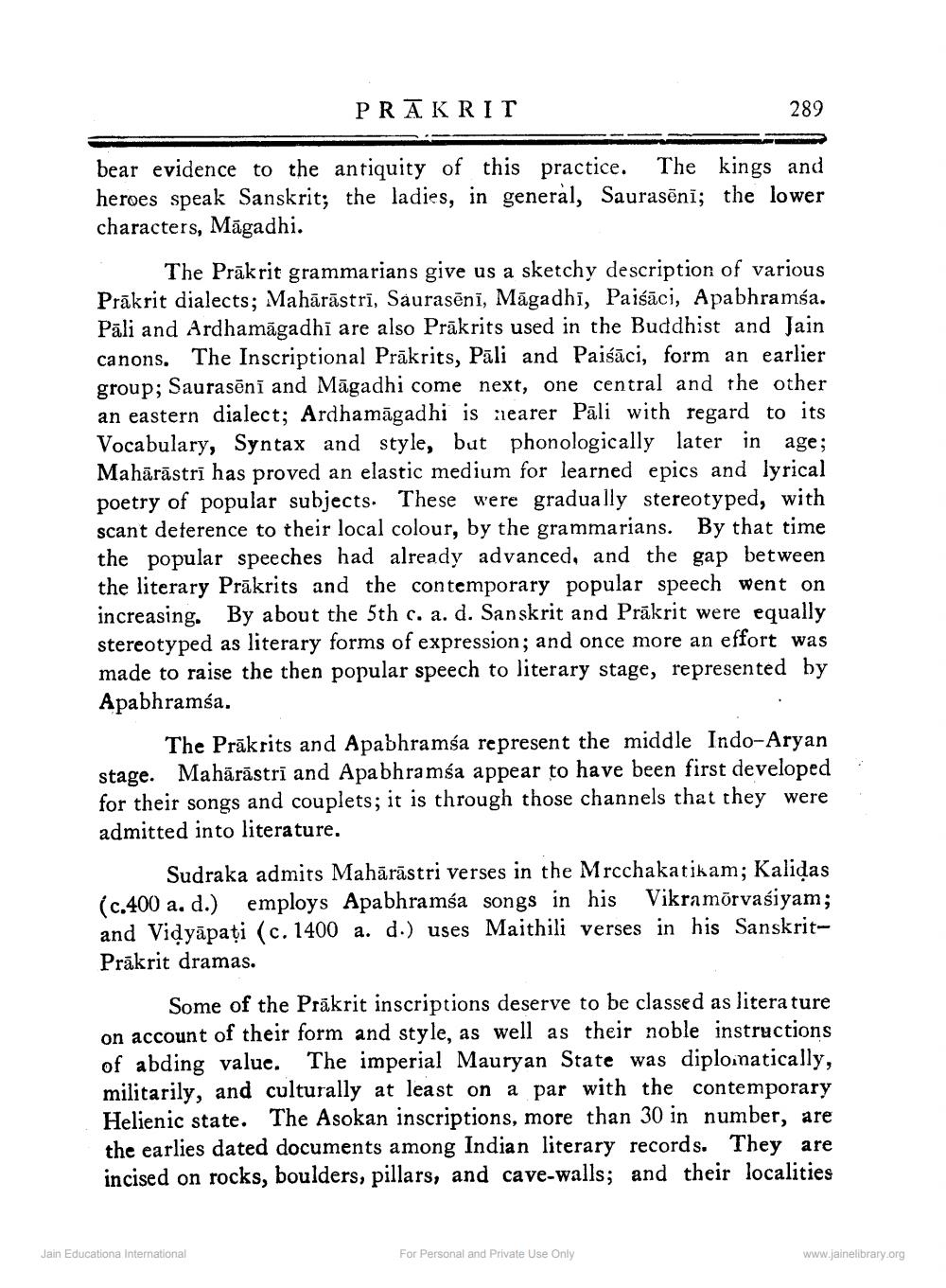________________
PRAKRIT
bear evidence to the antiquity of this practice. The kings and heroes speak Sanskrit; the ladies, in general, Sauraseni; the lower characters, Magadhi.
The Prakrit grammarians give us a sketchy description of various Prakrit dialects; Mahārāstrī, Saurasēnī, Magadhi, Paisaci, Apabhramsa. Pali and Ardhamägadhi are also Prakrits used in the Buddhist and Jain canons. The Inscriptional Prakrits, Pāli and Paiśaci, form an earlier group; Saurasēnī and Magadhi come next, one central and the other an eastern dialect; Ardhamagadhi is nearer Pali with regard to its Vocabulary, Syntax and style, but phonologically later in age; Maharastrī has proved an elastic medium for learned epics and lyrical poetry of popular subjects. These were gradually stereotyped, with scant deference to their local colour, by the grammarians. By that time the popular speeches had already advanced, and the gap between the literary Prakrits and the contemporary popular speech went on increasing. By about the 5th c. a. d. Sanskrit and Prakrit were equally stereotyped as literary forms of expression; and once more an effort was made to raise the then popular speech to literary stage, represented by Apabhramsa.
289
The Prakrits and Apabhramsa represent the middle Indo-Aryan stage. Maharastrī and Apabhramsa appear to have been first developed for their songs and couplets; it is through those channels that they were admitted into literature.
Sudraka admits Maharastri verses in the Mrcchakatikam; Kalidas (c.400 a. d.) employs Apabhramsa songs in his Vikramōrvasiyam; and Vidyapati (c. 1400 a. d.) uses Maithili verses in his SanskritPrakrit dramas.
Some of the Prakrit inscriptions deserve to be classed as literature on account of their form and style, as well as their noble instructions of abding value. The imperial Mauryan State was diplomatically, militarily, and culturally at least on a par with the contemporary Helienic state. The Asokan inscriptions, more than 30 in number, are the earlies dated documents among Indian literary records. They are incised on rocks, boulders, pillars, and cave-walls; and their localities
Jain Educationa International
For Personal and Private Use Only
www.jainelibrary.org




